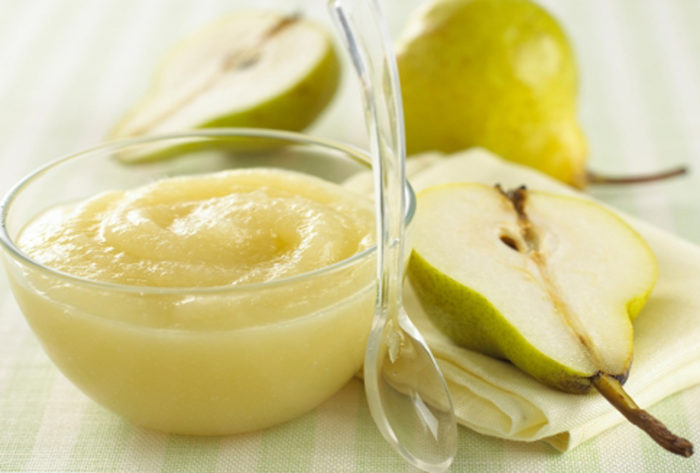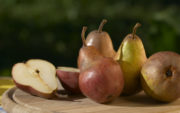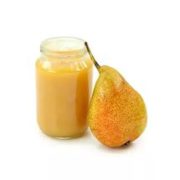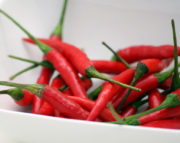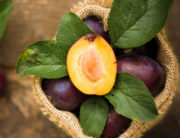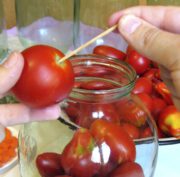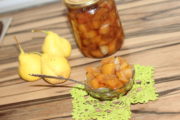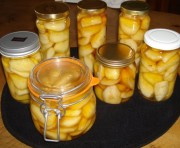Fragrant pear preparations for the winter
The taste of pear cannot be confused with anything else. She is a real symbol of midsummer. And that’s why many try to prepare these wonderful fruits for the winter. If you do this correctly, you can save up to 90% of the vitamins and nutrients contained in the fruits. And in winter, please your loved ones and friends with aromatic dishes and drinks.
We are used to using pears for desserts - in the form of jam or compotes. However, this wonderful fruit can be prepared in different ways. Pears are frozen and dried, canned in their own juice, pickled, soaked and cooked into a wonderful puree.
Content
Dried pears
Drying is one of the simplest ways to prepare pears for the winter at home. Dried pears contain ascorbic acid and are therefore necessary during the period of winter vitamin deficiency. In addition, they have a pronounced diuretic and fixative effect. Dried pears are good for everyone who has problems with the pancreas. Potassium, which is part of this product, helps with cardiovascular diseases, and iron helps with low hemoglobin.
Ripe or slightly unripe fruits with granular and dense pulp are suitable for drying. Wash the pears, cut them in half, remove the core and cut them into slices up to 1 cm thick.After this, the pears are laid out in a single layer on a baking sheet covered with parchment paper. So that the slices lie separately, without overlapping each other. If you dry pears outdoors, it is best to do this on the veranda or attic, under conditions of constant ventilation. This drying will take about a week. You must remember to periodically turn the slices so that they dry evenly.
You can speed up the process by using an oven. To do this, put it in blowing mode (up to +45°C) and periodically open the door to allow excess moisture to escape.
Dried pears are used as healthy snacks. They are added to fermented milk products and cereals. This preparation makes excellent compotes and baking fillings. The only condition is to soak the product before use.
How to store dried pears? At room temperature, in a dark place and without excess humidity. When stored in a cellar (at temperatures below +10°C), as a rule, mold begins to form on them. At least once a month, containers with dried pears must be inspected. If there is a suspicion that the product has begun to deteriorate, it needs to be dried on a baking sheet in the oven.
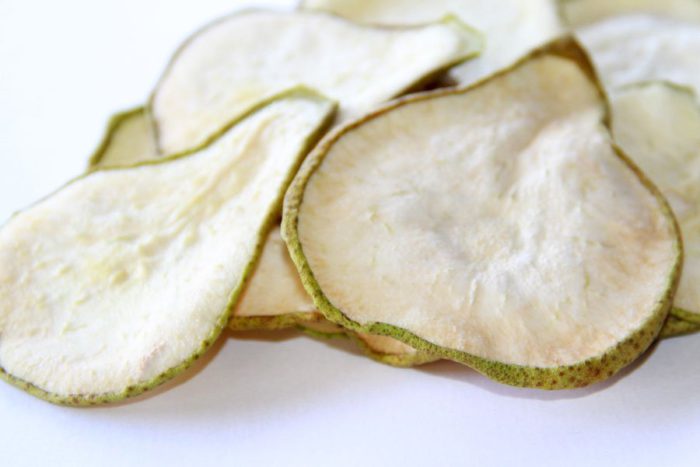
The author of the video, Oleg Kochetov, tells how to dry pears in an electric dryer.
Freezing pears
If the freezer capacity allows you to store a large amount of food, pears can be frozen for the winter. This is a great way to preserve nutrients and also save time and effort on canning.
Ripe, dense, medium-sized fruits are suitable for freezing. The pears are washed, cut into quarters and cored. After this, the fruit should dry a little on a paper towel or cutting board.It is better to freeze pears by placing them in the freezer in separate pieces. After a while, when the fruits freeze, they are placed in plastic bags in portions. For example, by measuring the number of pears that will be needed to prepare one compote. Then remove all air from the bags, seal them tightly and store the workpiece in the freezer at -18°C. Another way to prepare it is to sprinkle the pear pieces with sugar and place them in the freezer.
Frozen fruit makes a great topping for baked goods. They make very tasty desserts and aromatic drinks. However, using frozen pears has its own characteristics. They should not be stored for more than eight months. In addition, defrosted fruits quickly become “mushy,” so if you want to use fruits as a filling, then you need to put them in a cake or pies without defrosting.
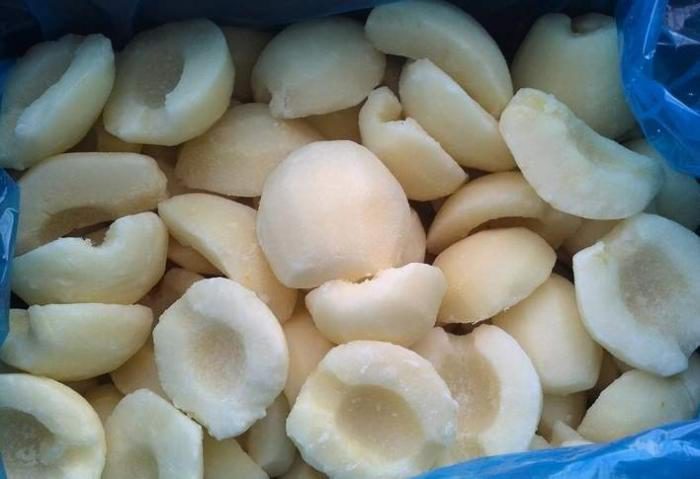
Canned pears
Pears canned in their own juice are considered one of the most delicious desserts. It is delicious on its own and also very good with various additions, such as chocolate or berry syrup and ice cream.
Too ripe fruits are not needed for preservation. First, the pears are washed and peeled and seeds removed with a thin knife. You can preserve fruits in halves or slices. The pears are placed tightly in pre-sterilized jars, sprinkled with 1 tbsp. a spoonful of granulated sugar (per half a kilo of fruit) and, if desired, cinnamon powder. Then add 1-2 tbsp. spoons of water, cover with lids, and place the jars to sterilize in a pan of water. It is best that the water does not boil, but has a temperature of +70°C. Sterilizing a 0.5 liter jar will take 30 minutes, 1 liter - 40-45 minutes.Then the jars are sealed, turned upside down and allowed to cool, covered with a blanket.
Get the step-by-step recipe canning pears in lingonberry juice syrup available on our website Make it delicious!.
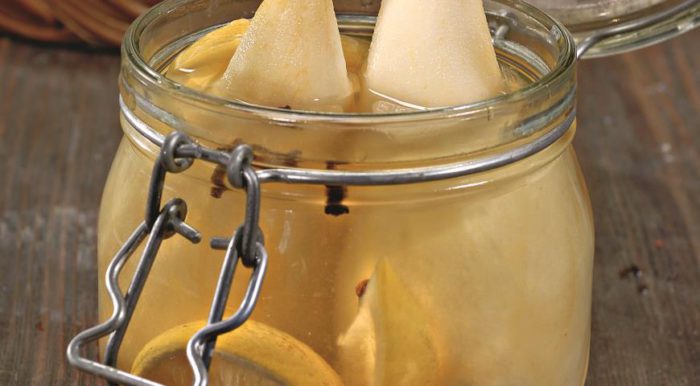
Pickled pears
Marinating pears for the winter allows you to prepare a product that can then be used as a side dish for meat and poultry dishes. Pickled pears are also good as a flavorful, savory snack.
For this method of home preparation, dense fruits with thin, delicate skin are suitable. And it is best to opt for less tart pears. Bay leaves, cloves and peppercorns are used as spices that will highlight the taste of the fruit. And if you like spicier food at home, you should add chili pepper to the marinade. The selection of spices and herbs for marinades depends on the wishes of the cook. By replacing ingredients, it is easy to get a finished product with completely different flavors. That’s why many housewives like pickling as a type of preparation.
The pears are washed, cut into quarters, seeded and placed in a bowl or pan with slightly salted water. Then they start preparing the marinade: dissolve 300 g of sugar in 1 liter of water and put the pan with the marinade on the fire. When the water boils, add 125 ml of table vinegar to it. After this, the marinade is boiled for another 5 minutes. Spices are placed at the bottom of sterilized jars, placed inside the pear and the entire contents are filled with hot marinade. Sterilization of 0.5 liter jars takes 10-15 minutes, liter jars – 20-25 minutes. After which they are sealed with lids and left to cool.
ABOUT an unusual recipe for pickling pears with lemon zest can be found on our website Make it delicious!.

Soaked pears
Many people like the spiciness and pungency of soaked foods. Pears that are dense in texture, slightly unripe and medium-sized are perfect for such preparations. The washed fruits are placed in an enamel bowl or a spacious tub with the receptacle down. Fragrant blackcurrant leaves are placed between layers of fruit. Rye straw, spilled with boiled water, is also excellent for soaking. They lay layers of pears with it and cover everything on top with such straw.
Then the wort is prepared for soaking: 150 g of rye flour or the same weight of ground rye crackers is mixed with 0.5 liters of water. Then add another 2 liters of boiled water. When the liquid has cooled, strain it through cheesecloth and add 1 tablespoon of mustard powder and 1.5-2 tablespoons of salt. Then add cooled boiled water to the wort to a volume of 10 liters. This solution is poured into the pears.
The container is covered with a clean cloth, a wooden circle and pressure is applied. For the first week, soaked pears should be kept in the room. And you need to constantly check that there is enough liquid - it should cover the fruit completely. Then the container is transferred to the cellar for permanent storage. The temperature here should not be below 0°C. Soaked pears will reach the desired condition after 40 days.
How to make your own flavorful ones soaked pears with lingonberries our site will tell you Make it delicious!.
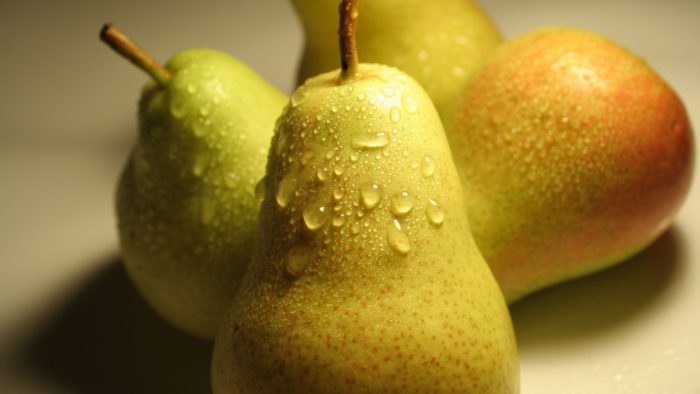
Pear jam
There is probably no person who does not like the delicate taste of jam made from ripe pears. This preparation for the winter contains a large supply of microelements and vitamins. In addition, if people who have problems with the gastrointestinal tract are often not recommended to eat pears raw, then in the form of jam this product will be absolutely safe for them.
To keep pieces of pears in the jam, you need to select dense, slightly unripe fruits. First, the pears are washed, cored and cut into slices. Then pour 1 kg of granulated sugar (per 1 kg of pears) into a separate pan, add 0.75 liters of water and put it on the fire. When the syrup boils, remove the foam from it. Pear slices are placed in syrup and boiled, stirring, until tender. The jam is ready when the pieces become translucent and droplets of jam do not spread on the saucer.
The finished jam is placed in clean, dry jars and covered with lids. It can be stored at room temperature. Pear has its own aroma. But, nevertheless, in order to diversify the taste of the finished product, lemon zest, rowan berries, sour apples or cinnamon are often added to the jam. Small fruits can be used whole for pear jam, even leaving the stems.
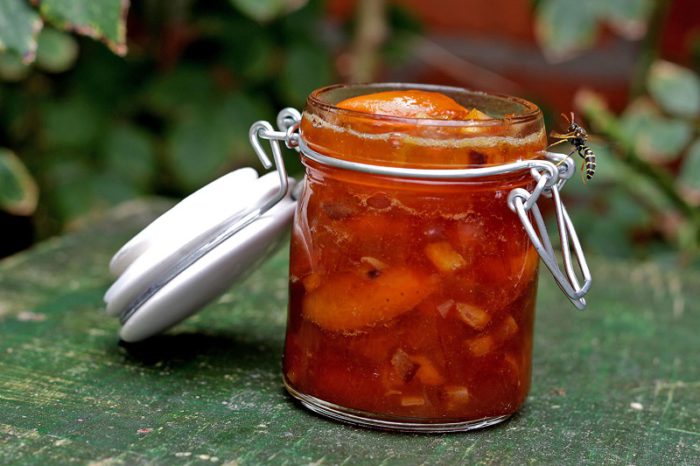
In the video, Natalya Litvinova will talk about a simple recipe for making pear jam with lemon and orange.
Pear puree
Puree, as a preparation for the winter, is made for various reasons. It is convenient to use as an independent dish, especially in children's and diet food. The puree is used as a filling in homemade pies, and is also served as a dessert in combination with ice cream. If the puree is not very sweet, it can become an original addition to hot meat dishes. And one more plus: preparing fruit puree is not a difficult task. And everyone can handle it, even the most inexperienced cooks.
To make puree, the whole fruit is baked or boiled. For cooking, pears are first peeled, removed from the skin, stems and seeds. You can bake the fruits whole. In this case, they are cleaned later. The finished fruits are kneaded to a smooth puree.In order for the product to be preserved for a long time, it is placed in jars, covered with lids and sterilized in a saucepan with water: 0.5 liter jars - 15-20 minutes, 1 liter - 20-25 minutes.
